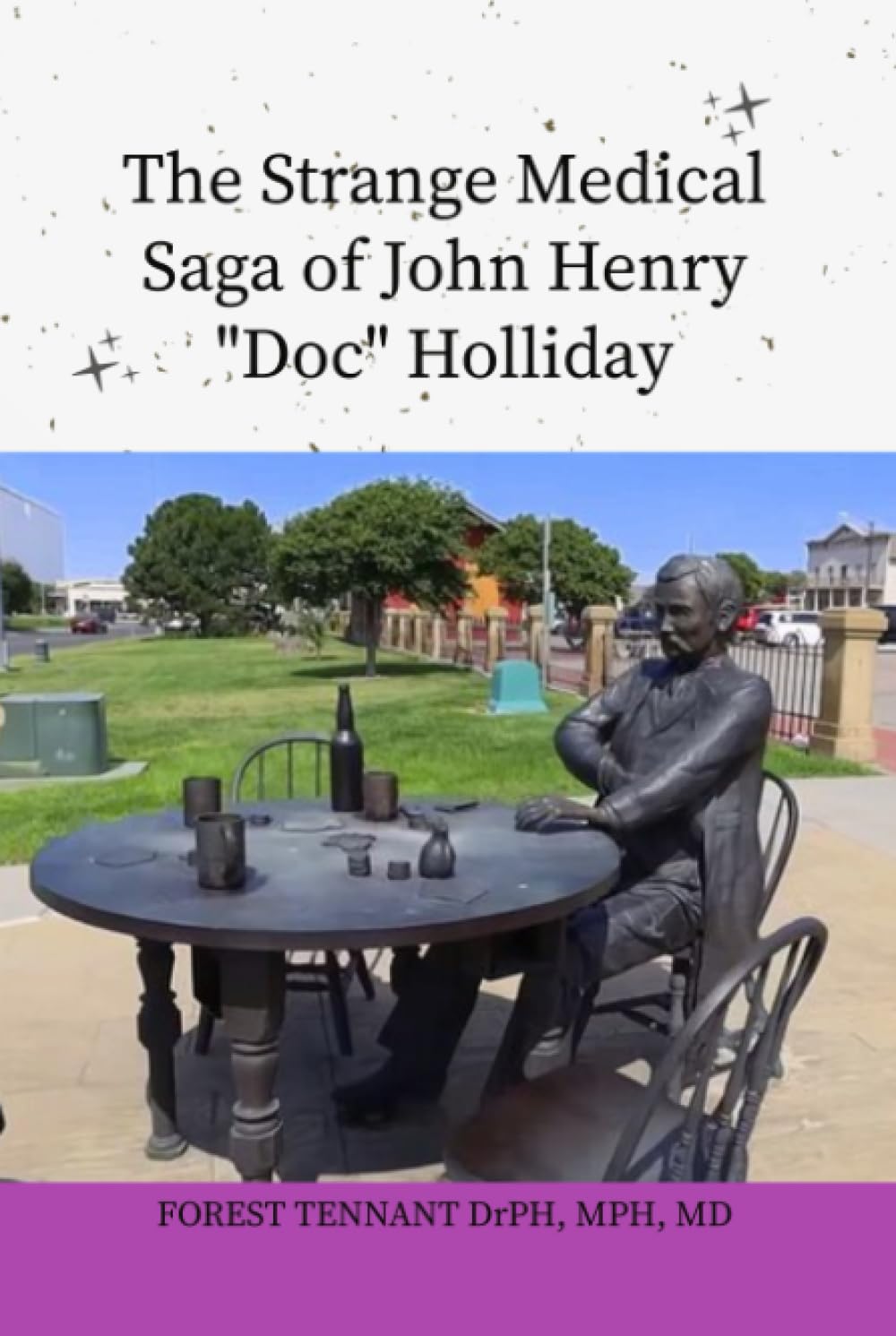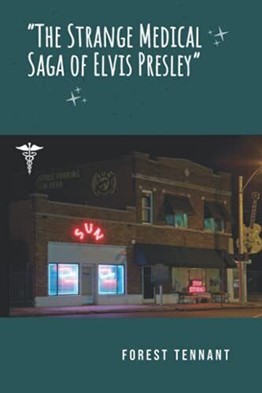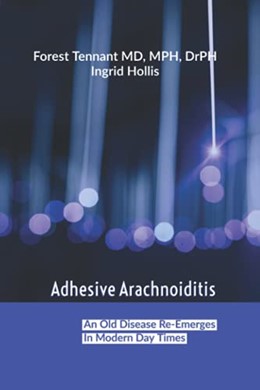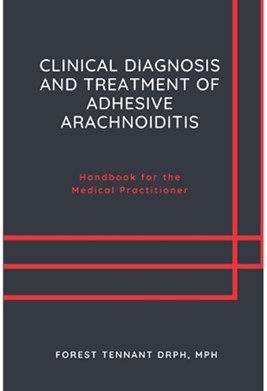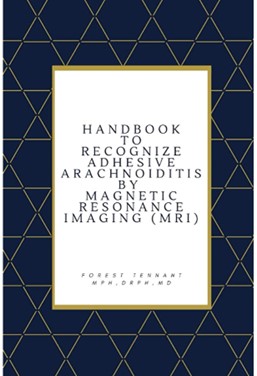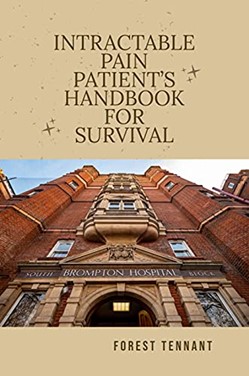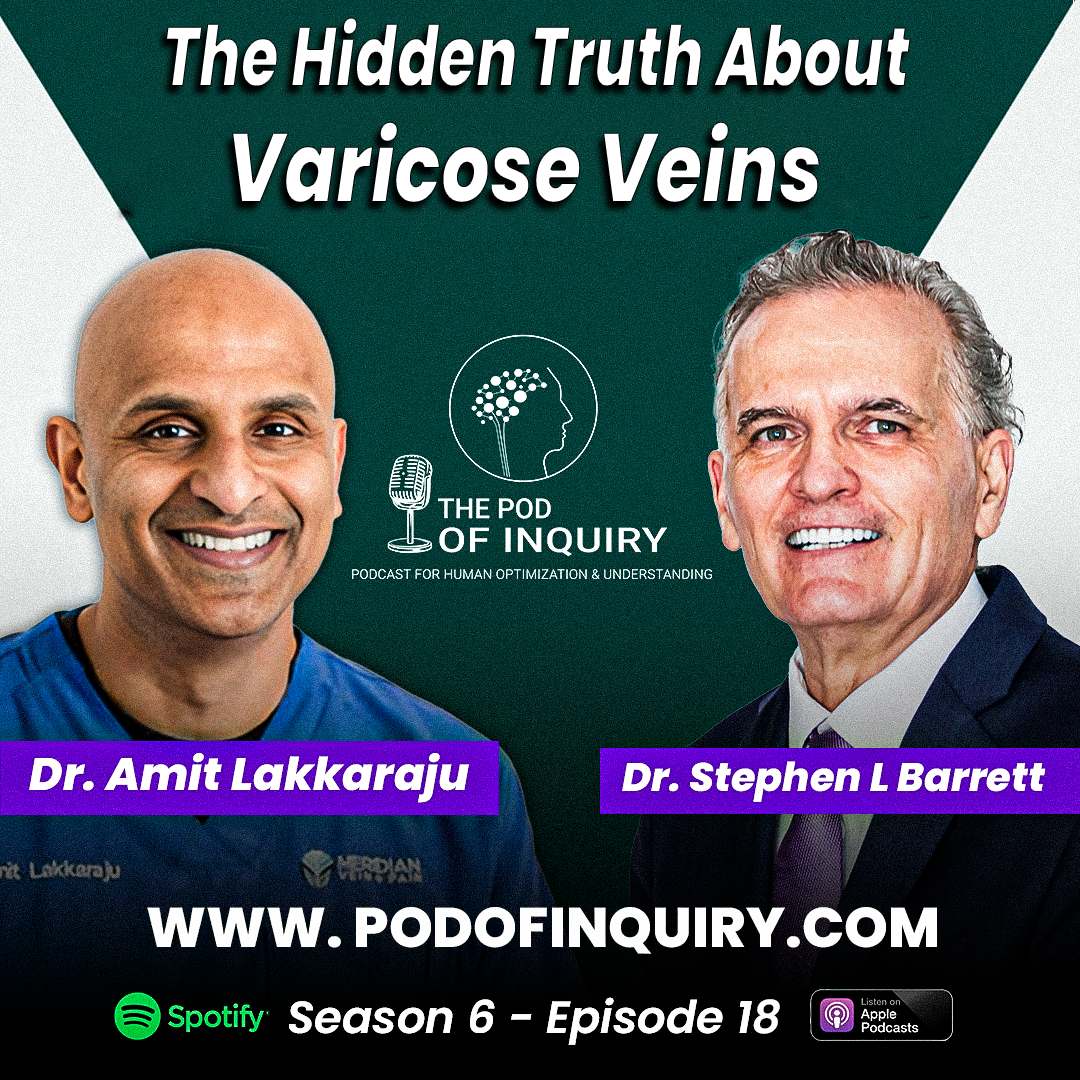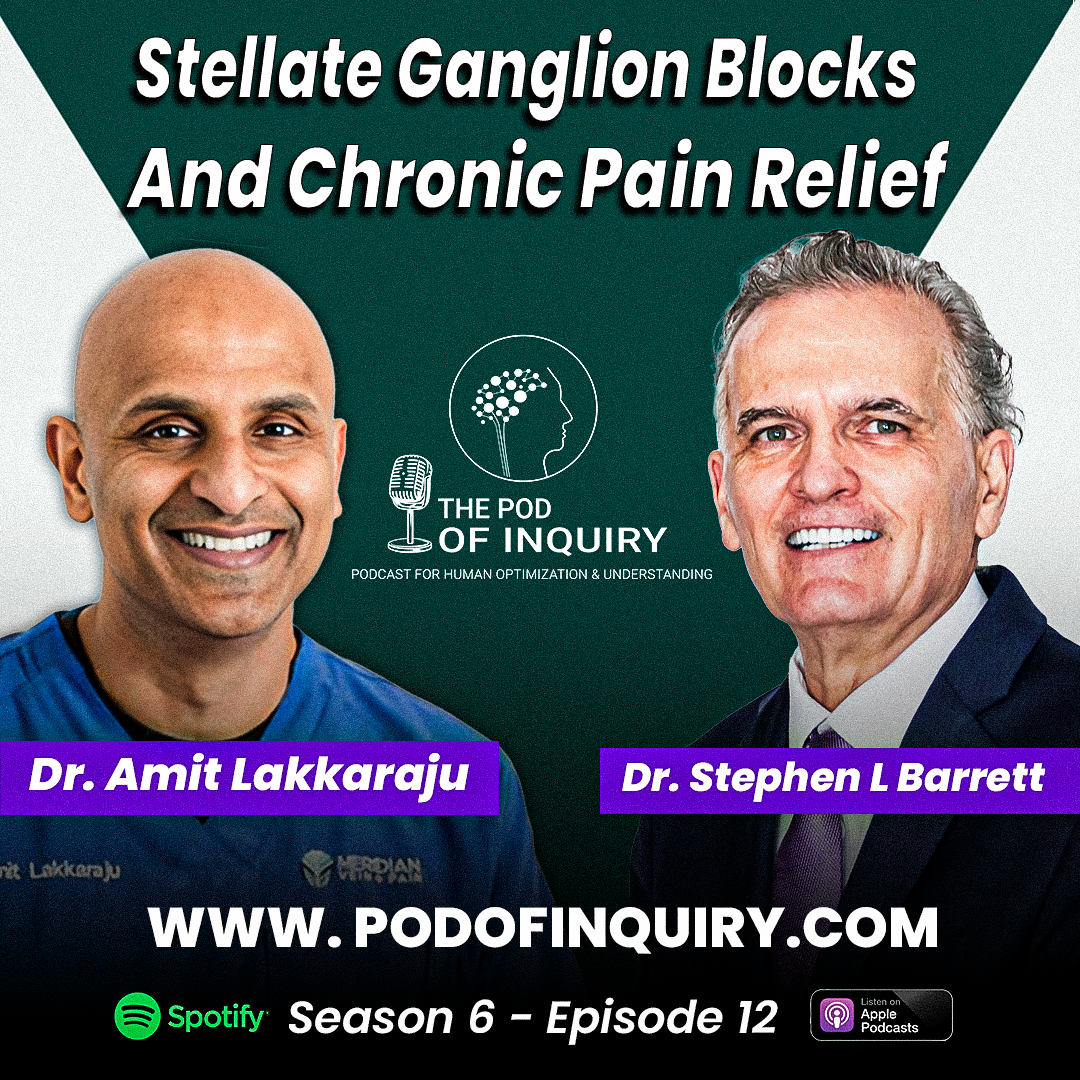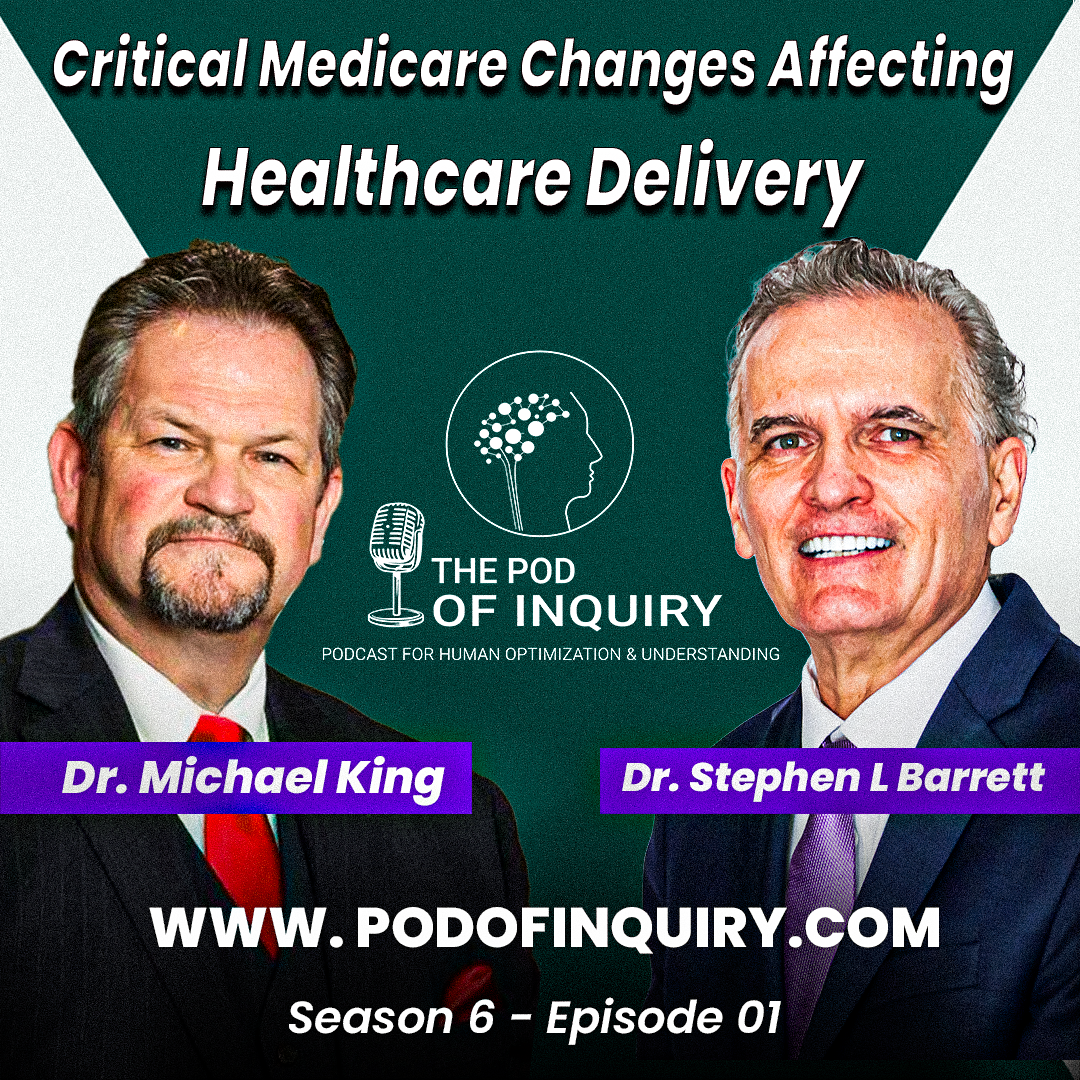Show Notes
Dr. Forest Tennant
How Dr. Forest Tennant got to the Pain Management World [00:00]
- Tennant is an internal medicine specialist by trade
- He served time in the US Army
- He did Public Health Service where he started to do research in medical fields
- His main interest initially was in addiction medicine in 1960-1970
- During the 1970s, he was one of the physicians who started setting up alcohol and drug detoxification programs and later came methadone maintenance.
- Methadone maintenance programs for addicts and people who were in Vietnam
- People with intractable pain started coming just to get their pain treated
- Patients were coming in for narcotics (now called opioids) for pain treatment
How Pain Management started in the United States [02:24]
- Pain management in the United States started in 1970 with methadone maintenance programs
- Tennant found out that methadone would relieve severe pain
- Patients started going to the same clinics that heroin addicts were going to
- Within the county health department structure in Los Angeles, Dr. Tennant started setting up special units for severe pain patients.
- Tennant and other physicians encountered the same thing and started meeting together. Most of them came out of public health and Addiction Medicine, and started pain treatment.
- Tennant’s clinic goes back to 1976.
- They’ve gone through two or three generations of trying to deal with the pain problem
- People are getting some help; a lot of advances have been made.
- It’s been controversial because addiction and opioid overdoses have gotten mixed up with legitimate pain treatment, and people don’t know the difference.
- There’s been advances on both in addiction and both in pain, but they are not the same.
“That’s one of my basic messages to everyone: addiction and pain are not necessarily the same thing.” –Dr. Forest Tennant
The Difference Between Opioid Dependence and Addiction [04:30]
- In Dr. Barrett’s experience, patients with horrible peripheral nerve pain take opioids to improve quality of life; they are not truly addicted because they want to wean off opioids quickly once pain is resolved.
- Tennant prefers the term therapeutic dependence
- Those people can stop their opioids if we could get rid of their pain
- Most opioid addiction is genetically based, as well as having cultural and social influences
- They don’t have a pain problem that can be stopped.
- They probably will need to be on an opioid for life
- They’re both taking an opioid every four hours, you’d think they’re all a one on the same animal if you will, but they’re quite different.
Why Proper Usage of Opioids is Important [06:17]
- In pain treatment, you start off with anti-inflammatory agents, muscle relaxants, and exercise.
- You don’t want to have anybody take opioids unless you have to.
- If you did start opioids, you start at low levels, and titrate up very slowly over weeks or months. Therefore, they could function and could act like a normal human being.
- Unfortunately, when they made pain the fifth vital sign, some drug companies and doctors didn’t know better.
- They forget the proper use of opioids is titration upward, both for addiction and for pain.
- They didn’t bother to titrate people; they got overdoses or too dependent.
- The country has paid a penalty for not trying to do the basics of opioid management
- This terrible problem led to crises, lawsuits, overdoses.
- The country has gone through a real learning curve; they didn’t listen to those who had been in the field for 30 years.
How Advancing Technology has affected Pain Management [09:41]
- The timing of jumping into pain management occurred right at a time of great technological advances with a computer, lasers, implants, and electricity.
- Tennant also had come along simultaneously with the development of the Fentanyl patch and Oxycontin, epidural injections, implant stimulators, and morphine pumps; people thought these were going to save us.
“Technology did not overcome the basics.” –Dr. Forest Tennant
- People in America have had too many implants, procedures, surgical procedures that have been in excess and shouldn’t have been done.
- Tennant makes it clear: these technological advances have been just that but they were overused.
- We had the Johnny-Come-Lately syndrome 20 years ago, but we’re over that.
- Today, throughout the country, you find well-trained people who know what they’re doing.
- They’re using the opioids and the new technologies appropriately.
- The greatest advances in pain management have been that we’ve developed a lot of new medical and surgical procedures that are keeping people out of having to take opioids and having to deal with heavy duty pain management.
“It’s great to have all of these technological advances, but there’s no one magic bullet. They have to be assembled or aggregated in a symphony in order to really maximize the patient outcome and patient experience.” –Dr. Stephen Barrett
“The practice of medicine will always have to be done by a patient, a family, and a good medical practitioner; the three have to always work together.” –Dr. Forest Tennant [12:19]
- When you’ve got these great technological advances and drugs, you’ve still got to put some love and care into it, a little nutrition and some exercises, and what we like to call a whole holistic or integrative approach.
- Today, we just have an awful lot more options and technology.
- We have forgotten how to do some basics: love and care, concern, good science, good technology, and good system.
- One of the things that Dr. Barrett likes to look at in a preoperative workup with patients is, “What’s their family support?”
- You can do the greatest surgery in the world, but without support, it undoes what you’ve done at the time of the operation.
- Anybody who’s seriously ill has got to be in a support system.
- Medical care has to be in the family or in a community at the local level.
- You can’t just be alone in society and get better.
- If your family, your loved ones, your neighbors, your family, your church, your community isn’t all together, you’re not going to get well very fast.
The Strange Medical Saga of Elvis Presley [15:33]
- In 1976-1977, Dr. Forest Tennant was the only person in the United States who was studying opioids for both intractable pain and addiction; he had been trained and given grants
- When Howard Hughes died, the government asked Dr. Tennant to be their medical expert because he was found to be taking a lot of narcotics.
- He was given all of Howard Hughes’ autopsy records and medical records that appeared in a trial; he got to meet his doctors
- He recorded Howard Hughes Medical history in a book.
- A year later, Elvis Presley, who was thought to be just a plain drug addict, dies.
- There was a great controversy as to why he died.
- Did he overdose on drugs or did he have a heart attack?
- They tried to accuse and prosecute Dr. George C. Nichopoulos of murdering Elvis Presley.
- They called it wrongful death, brought by the district attorney of Shelby County, Memphis
- Nichopoulos found a famous attorney to defend him; he was the same attorney that prosecuted Richard Nixon in the Watergate trials.
- The attorney and Dr. Nichopoulos needed a medical expert, and they sought Dr. Tennant out.
- Tennant appeared in the trials and was given all of Elvis Presley’s records, medical records, autopsy records, and special investigations.
- Nichopoulos was hardly a criminal.
- About 12 doctors at the Baptist Hospital-Memphis knew Elvis Presley had some debark bizarre disease, but they couldn’t ever figure it out.
- Tennant didn’t know what Elvis had either, but knew he was sick.
- Elvis had troubles in the eye, ear, stomach, and back, headaches, and all kinds of serious issues
- He wore sunglasses to one of his performances because he had glaucoma. So that caused all the performers to start wearing sunglasses.
- The doctors did a lot of laboratory and X-ray tests that were available at that time were done on Elvis, but nothing revealed it.
- Genetic testing has been able to take chromosomes and analyze what is wrong with genes and figure out what diseases emanate from gene abnormalities.
- Elvis did have a genetic disease; it is commonly called as Ehlers Danlos
- Ehlers and Danlos were physicians who described the disease about a century ago.
- Doctors have seen Ehlers Danlos cases for years; they just didn’t know why somebody would have this kind of a disease.
- There was a great controversy as to why he died.
“Ehlers-Danlos causes collagen to disappear.”
- Collagen keeps your teeth, spine, intestine, and eyes together.
- If we start losing collagen, you get all these different problems.
- Elvis also was a drug abuser.
- How much of that was caused by his genetic need to treat his disease?
- How much of it was just his psychological state?
- No one will ever know.
- Elvis died at age 42
- The severe forms rarely lived past about age 48.
- He was right in the age range that you normally die with this disease.
Ehlers Danlos is now recognized [22:50]
- Treatments are being developed for that particular genetic genes.
- There’s an Ehlers Danlos society
- They’re doing wonderful testing to identify these people
- There’s 1 in every 3500 persons with that disease.
- If you get something like an auto immune disease on top of it, you’re even in worse shape.
- It’s being researched.
- Great advances are being progressively made
Elvis Presley’s Influence in the Past [24:00]
- Tennant was trying to play the trumpet in a dance band in his high school of Hutchinson, Kansas, when Elvis Presley was at his peak in the 50s.
- They all saw Elvis was the greatest there was.
- They thought that if they could wiggle their hips and shake their legs like Elvis, they could not only play their trumpet better, but might catch a few more girls.
- They were wrong trying to do what Elvis did.
- Elvis can do all those gyrations because of Ehlers Danlos.
- In Dr. Tennant’s opinion, people with Ehlers Danlos tend to have a personality that’s almost too nice for their own good.
The Elvis Presley Trial [25:37]
- The jury got two kinds of facts: Dr. Nichopoulos and all the other doctors tried to treat Elvis’s medical problems and his addiction.
- The jury found Dr. Nichopoulos not guilty very quickly
- Tennant could see why the district attorney felt he had to do something.
- There was great political pressure to figure out what happened to this hero of everyone and why he had all these drugs.
The Howard Hughes Case [26:41]
- The Howard Hughes case was almost the same with the Elvis Presley trial
- Everybody thought Howard Hughes was just a ‘kooky’ character
- Howard Hughes was ‘kooky’ because he was born with a bonafide genetic, obsessive compulsive disease.
- The bad decisions he made are legendary if you read or study about him
- One of the terrible things he did in 1946 was going to test an experimental plane for the government.
- He went up and was told this plane has 11 minutes or so of gasoline.
- He has to get the plane off the Santa Monica airport in about six minutes or so
- He goes ahead and starts flight at way past the gas tank so the plane crashed
- He had 11 ribs fractured, flailed lungs collapsed, hips broken; how he lived is a miracle.
- A Marine Sergeant was walking through the neighborhood where he crashed, pull him out of the plane and they saved him
- He had a couple of doctors who were new, had been in the war, and knew how to save somebody from that kind of trauma.
- He was kept alive long enough to healing but was left in intractable pain the rest of his life.
- He had to start opioids, mainly codeine.
- After about 1955, he became a wreck loose for a number of reasons.
- He was quite disfigured
- He was extremely ill.
- Misguided pictures about how he couldn’t cut his fingernails, comb his hair, or brush his teeth
- After about 1955, he became a wreck loose for a number of reasons.
“He had Reflex Sympathetic Dystrophy or Chronic Regional Pain Syndrome; this is a syndrome in which you can’t even cut your fingernails, brush your teeth or touch your own skin at times.”
- He stayed in his hotel room, almost naked a lot of the time because he couldn’t stand to put on clothes that hurt too bad.
- In 1964, a drug came on the market called Valium, and his doctors put him on it.
- It controlled his obsessive compulsive disease and a lot of his pain.
- Between his codeine and his Valium, he could control his own thoughts.
- He was taking the Valium and controlling his obsessive compulsive disorder and pain.
- He decided to change his life at 65 years old; Howard Hughes is the epitome of changing your life.
- He decided to sell his RKO Studios in Hollywood
- He sold Trans World Airlines (TWA)
- He put all his money in his pocket
- He consciously remade Las Vegas and turned it from a criminal mafia town into a great entertainment center.
- The Howard Hughes real estate company is still centered in Las Vegas and they sold that company.
- He still owns a lot of real estate
- He still funds the Howard Hughes Medical Institute.
- He’s made a conscious decision, thanks to his good medical treatment.
- There was a trial against Howard’s doctors and Dr. Tennant appeared on behalf of the government.
- Tennant was able to analyze the documents and found out Howard also had doctors who did everything in their power to help him.
- There was no criminal activity; Howard Hughes managed to survive.
“Anybody who’s got intractable pain out there ought to hear this: He got his intractable pain in 1946. He lives 30 years taking opioids and Valium every day, during that 30 years, and accomplish a lot of things in society that we still to this day benefit from.” –Dr. Forest Tennant
Learn More About these Cases [32:20
- Tennant has written two medical history books on Howard Hughes and Elvis Presley; he was the only one who had the information.
- Tennant says they were pretty happy people; they made the best of it.
- Tennant hated how these great people had such negative image portrayed in the media.
Integrating Opioid with Other Medications [33:47]
- They mixed Codeine with Phenacetin for Howard Hughes that may have caused kidney failure; the codeine compound today doesn’t have an acid in it, mainly because of him.
Today, prescribing a patient benzodiazepine with opioid, you get warnings. But then, some folks that aren’t really managed well with just an opioid integrate a benzodiazepine, and their pain becomes more controllable and they actually end up taking less opioid.”
- There’s been a lot of researchers in those laboratories and have really told us how pain works in the brain.
- It turns out is that in the brain, there are about six different targets or scientifically called as receptors.
- These receptors are action points and work by a chemical called neurotransmitters.
- The one best known to the public is endorphin, which attaches to this opioid activator or receptor.
- The second most important one is one called gamma amino butyric acid, abbreviated GABA; it stops electrical activity in the brain and in the nervous system.
- You have something called dopamine which acts on it.
- Marijuana is known for relieving pain because it has its own receptor called an endocannabinoid receptor.
- In order to get pain relief, one has to substitute these neurotransmitters.
- Codeine, oxycodone, or methadone is substituting for endorphins, which the pain is probably depleted.
- Valium and gabapentin are derivatives of GABA
- Valium and valerian herbal root will give you some similar activity.
- In order to get good pain relief, you have to take a GABA agent and an endorphin agent; you may need a dopamine agent, or a cannabinoid agent
“Good pain doctors know that you’re going to have to have a drug in the valium class, plus a drug in the morphine class if you’re going to relieve severe pain.” –Dr. Forest Tennant
- Howard Hughes had access to both and he made it 30 years.
- FDA and DEA does not restrict doctors from prescribing or combining them.
- They put a black box label; everybody misinterprets it.
- They didn’t say not to use them, they said to be cautious when using them.
- If you’re going to be a doctor, and you prescribe valium, or Xanax, as well as morphine or Vikon, you want to see that patient over months:
- Have met a good control system
- Have the family involved
- Make sure that the patient is safe.
- It can be dangerous to give these things out. You could abuse these drugs.
“What the government and the guidelines have been saying is be cautious, be careful. But if you got to use them, use them. Today, we’ve gone too far the other way where people aren’t using them when people need them.” –Dr. Forest Tennant
- As far as a potentiation of drug with an opioid and benzodiazepine, the significance from developing respiratory depression, in the good hands of a medical practitioner, is zero.
- In 1982, the World Health Organization (WHO) developed something called the analgesic ladder. What does that mean? You start low, you go slow.
- You start off with the weakest opioid available today, like Tramadol, then codeine, then you work up.
- You don’t start right out with oxycodone or morphine.
- If you want to give somebody Valium, start off with two mg. Every four hours, and if you need to, go to five milligrams.
- Simple low dose titration, it’s perfectly safe.
- If any of us decide to take a handful of Valium and oxycodone today, don’t expect to wake up tomorrow. It’s just common sense.
Misconceptions About Drug Addiction and Drug Abusers [41:00]
- Tennant thinks what’s going on is that people who are drug addicts, drug abusers are getting a hold of these things and taking them, then the media blames a physician, nurse practitioner or somebody that causes this.
- Tennant has been at this over 50 years; he has worked, testified, and reviewed on many cases.
- If a person took the drug as prescribed by the medical practitioner and given by the pharmacy, Dr. Tennant has never seen an overdose.
“It’s time that we start putting some responsibility on the individual to take drugs as prescribed.” –Dr. Forest Tennant
- If you’re not going to take drugs as prescribed, expect overdoses and deaths.
- People are taking drugs other than as prescribed, or getting them without prescriptions.
- There’s nothing in any government guideline or labeling by the federal government that’s out of line. Nobody just likes them or wants to follow them.

